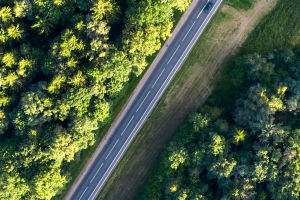Diwali or Deepavali is one of the most celebrated festivals in India, symbolizing the triumph of light over darkness and good over evil.
Known as the "Festival of Lights," it is a time when homes are adorned with lamps, candles, and vibrant decorations, while families come together to honor traditions that have been passed down for generations.
The Legend Behind Diwali
Diwali is celebrated for 5 days and its origins and meaning vary across different regions of India. One of the most popular legends behind the festival is the return of Lord Rama to his kingdom, Ayodhya, after 14 years in exile and his victory over the demon king Ravana. To celebrate his homecoming, the people of Ayodhya lit oil lamps (diyas) to light his way, marking the beginning of this luminous festival.
What Is Diwali?
Video by ClickView
Preparations and Decorations
Before Diwali arrives, households undergo extensive cleaning and redecorating, as it is believed that Goddess Lakshmi, the goddess of wealth, blesses clean and well-lit homes. People decorate their homes with:
Rangoli: Beautiful patterns made with colored powders, rice, or flower petals are drawn at the entrance of homes to welcome guests and bring good fortune.
Diyas and Lights: Clay oil lamps (diyas) and electric lights illuminate homes and streets, symbolizing the removal of darkness and ignorance.
Torans and Flowers: Bright garlands of marigold flowers and mango leaves are hung on doors and windows as a sign of prosperity and joy.
The Five Days of Diwali
Dhanteras: The first day, Dhanteras, marks the beginning of the festival. On this day, people buy new utensils, jewelry, and other valuable items as a sign of good fortune.
Naraka Chaturdashi: The second day, also known as Choti-Diwali, is a day for getting rid of evil spirits and negativity. People light diyas and burst firecrackers to drive away darkness.
Lakshmi Puja: On the third and most important day, families perform prayers (puja) to honor Goddess Lakshmi and Lord Ganesha. Offerings of sweets, fruits, and flowers are made to seek their blessings for health, wealth, and prosperity.
Govardhan Puja: The fourth day, Govardhan Puja, commemorates Lord Krishna's victory over the arrogant god Indra by lifting Govardhan Hill to protect villagers from a storm. People celebrate with feasts and offerings to Lord Krishna.
Bhai Dooj: On the fifth and final day, Bhai Dooj celebrates the bond between brothers and sisters. Sisters pray for their brothers' well-being, while brothers give gifts as a token of love.
Exchanging Gifts and Sweets
One of the highlights is the exchange of gifts and sweets among family members, friends, and neighbors. Traditional Indian sweets like ladoos, barfis, and jalebis are prepared in abundance. Gifting symbolizes sharing joy and fostering relationships during the festive season.
Fireworks and Celebrations
Nights are lit up by vibrant fireworks that burst across the sky, symbolizing the celebration of Lord Rama's return and the victory of good over evil. The sight of fireworks lighting up the night is one of the most iconic images associated with the festival.
Across the World
While primarily celebrated in India, the festival has gained popularity worldwide. From the United States to the United Kingdom, and Singapore to South Africa, communities come together to celebrate with traditional food, fireworks, and cultural performances.
Dear Lykkers, Diwali is much more than a festival of lights; it is a celebration of love, faith, and the eternal hope that light will always prevail over darkness. Through its vibrant rituals, beautiful decorations, and heartwarming traditions, it continues to bring people together, and spread joy, prosperity, and happiness across the world!


